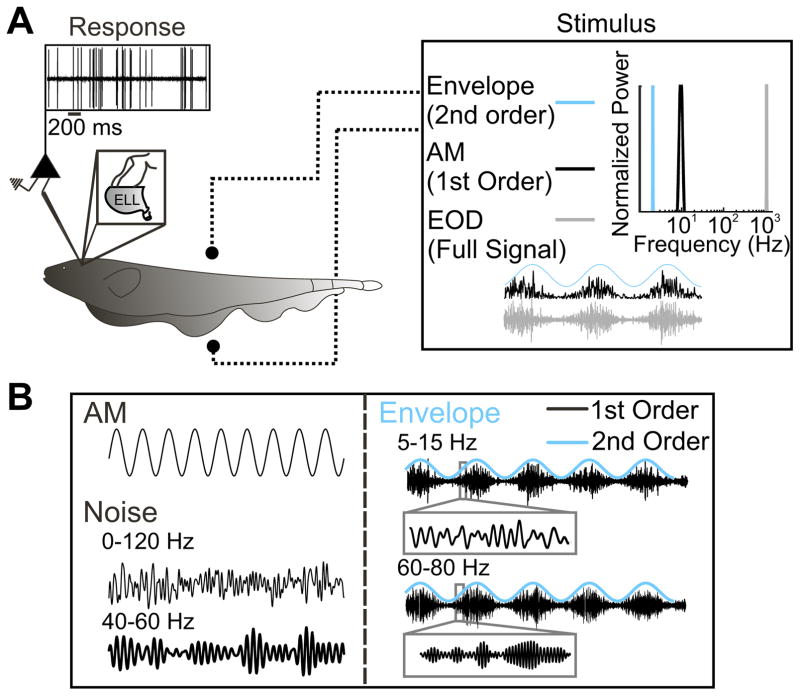Fig. 1.
Experimental setup. A: schematic representation of the awake behaving animal. The stimulus is delivered through 2 electrodes positioned on either side of the animal (dotted line with sphere) and the response is recorded extracellularly via Woods metal electrodes. The full signal received by the animal is shown in grey (right). The frequency contents of the full signal (grey), the amplitude modulation (AM; 1st order, black), and the envelope (2nd order, cyan) are shown at right. B: example stimuli delivered to the animal are shown. First order stimuli (left): 1) sinusoidal AMs delivered at 1, 2, 4, 8, 16, 32, 64, and 128 Hz, and 2) white noise (either broadband 0–120 or narrowband 40 – 60 Hz). Stimuli (right) that represent encounters between conspecifics: 5- to 15-Hz carrier noise (black, inset) mimic same sex encounters and 60- to 80-Hz carrier noise (black, inset) mimic opposite sex encounters. The envelope (cyan) for the 2 different carrier signals is also shown. EOD, electric organ discharge; ELL, electrosensory lateral line lobe.

